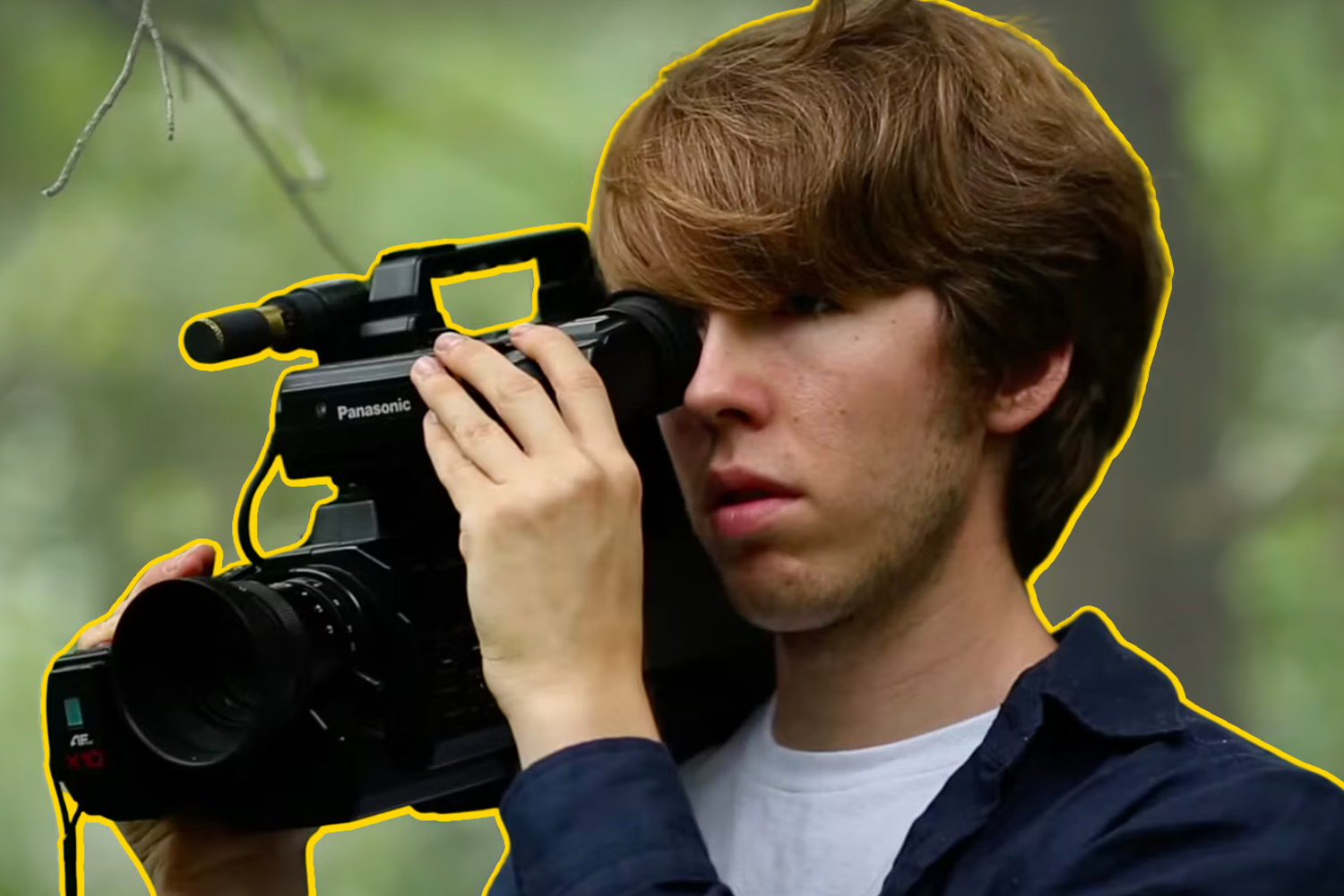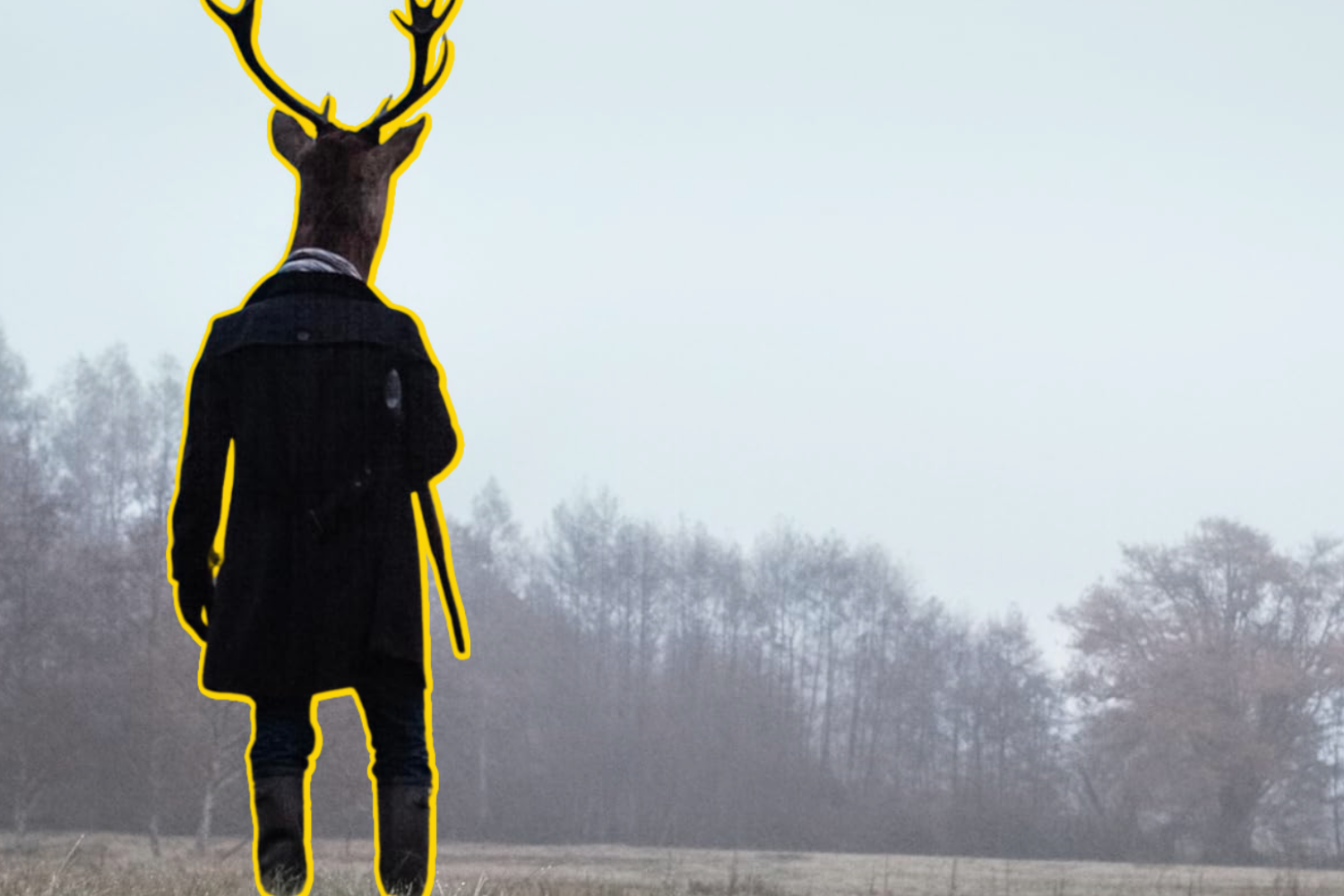Editorials
The Millennial Techno-Anxiety of ‘Landlocked’
January 19th, 2024 | By Emily Naser-Hall

It takes guts to put your childhood home on the big screen, let alone your entire family and home movies from your 1990s upbringing. But Paul Owens bares it all in Landlocked and puts a curse on it, too. Filmed in the Owens family home, Landlocked stars the director’s family and traps them in a time-collapsing nightmare of memory and nostalgia. This lean debut speaks to a kind of technological singularity, a phenomenon never to be replicated: the fascination with preserving life in amber — or, in this case, on celluloid.
Become a Free Member on Patreon to Receive Our Weekly Newsletter
Landlocked focuses on Mason (Mason Owens), who returns to his childhood home to collect mementos before the house’s scheduled demolition. The film opens with a montage featuring the family’s actual home movies, which the credits attribute to be “directed by” the filmmaker’s father, Jeffrey Owens. Intercut with these videos is footage of the fictionalized Jeffrey recording himself talking about how the house will be torn down in one year. This intro splices reality and fiction, past and present – which, to Mason and the audience, is now the past. Jeffrey’s voiceover narration bridges time as if speaking through the years. It ends abruptly when the familiar-to-any-90s-kid sound of a tape being ejected from a VHS player heralds the title card’s arrival.
When Mason arrives at the house, he discovers a VHS camcorder hidden in a secret closet. He ignores it until Paul — playing his fictionalized self — drops by, notices the camcorder, and buries it in a trashcan when he thinks Mason is not looking. Now intrigued by this antiquated techno-flashback, Mason recovers the camcorder and discovers its secrets — it can see into and, most importantly, record the past. Mason then dedicates his limited time to filming as many scenes from his childhood as possible, even when those videos uncover previously repressed horrors.
Landlocked displays a troubled relationship with nostalgia. Owens’ own camera evokes childhood warm ‘n fuzzies, then punishes us for feeling them. A point-of-view shot loans us Mason’s eyes as he looks at the past through the camcorder’s lens, which sees but does not record yet. Mason sees his younger self and his brothers playing in a creek behind their house, but only through the camcorder. When he takes his eye away from the lens, the images vanish, replaced by just the creek in the present. So he pops an old tape into the camcorder and presses record, and away we go. Only the tape — not his eyes or ours — can be trusted, so Mason has to prove the camcorder’s powers with the actual physical media.
This is a film about the uncanny experience of outgrowing the spaces that defined us, emphasized through both Owens’ and Mason’s cameras. Mason finds the camcorder in a hidden closet where a woman, played by Jane Gale, arrives unannounced. She asks to see the house where she, too, grew up and played as a girl. When she sees the closet, she remarks, “I thought it was bigger when I was a little girl.” Owens’s cinematography overdetermines size disparities in the house, showing how Mason no longer fits there. Mason’s elongated shadows on the wall and his inability to hide behind a curtain force him to renegotiate his emotional bonds to the home where he quite literally grew up. It’s a space that seemed bigger; its current smallness disappoints because, after all, we’re bigger now, too.
Mason’s obsessive reconstruction of his past calls into question the voyeuristic relationship we all have with our own histories. Past lives survive as long as pieces of those lives persist in other people and other spaces. Mason is willing to suspend his disbelief in order to capture his past in a way that lets him (and us) analyze it critically. Nevertheless, the film is very intentionally not a found footage film. Owens utilizes self-consciously experimental formalism that introduces an unsettling layering of filmic participation.
Who’s filming Mason? How aware do they want the audience to be of their presence? From its use of stalker cam to uncomfortably long takes of Mason filming what to us appears as an empty room — but to Mason is a portal of the past — Owens makes us question how much access we should have to another’s history. Even our own histories may not even belong to us, or we might not want them to. During another montage, Mason views a birthday party recording intercut with shots of an unknown person wandering through the woods. The footage immediately cuts away to the street outside the house, where Mason places the VHS in the road for a car to run over it. This jarring edit leaves us with Landlocked’s central questions: if it’s not recorded, do we have to remember it? Did it even happen?
The camera, then, is both miracle and warning. But the camera here isn’t just a camera — it’s a VHS camcorder. Landlocked displays intense anxiety about technology and its inevitable obsolescence. Long takes that focus on the technology are at the heart of the film’s uncanniness. Close-ups show Mason fiddling with the date settings, which determine which memories he’ll see when he looks through the viewfinder. A faded spot on the wall above the fireplace indicates where a flat-screen television once hung. Mason builds an elaborate setup of VHS players and clunky monitors capable of connecting with them but finds a red tape that will not fit into any players.
This cinematic attention to difficult or unworkable technology recalls Mason’s initial discovery of the camcorder’s capabilities, when he needed to record what he saw to believe it. Thanks to the availability of more affordable recording and home viewing devices in the mid-to-late 1980s, millennials were the first generation to have their childhoods recorded on film. Home movies promised infinite replayability, a kind of circumvention of memory’s failings. These technologies that were once so widely available have now all but vanished. VHS tapes still exist — Mason can hold them in his hands — but they are nearly impossible to view. The images and their entire emotional archive captured on physical film now have the status of ephemera.
Landlocked is an extended technological negotiation of loss. Memories fading or repressed manifest specifically as a cinematic or techno-loss that plays with the formal and aesthetic proportions of fear and love as we age out of ourselves. Perhaps these memories aren’t meant to come back, because when they do in Landlocked, they’re horrifying and weird. A burned figure credited as the Dust Man begins appearing on Mason’s and Owens’ recordings as Mason’s obsession grows. The past as viewed through the camcorder does not interact with Mason as he films it, but the Dust Man can see Mason.
At this point, time begins to collapse, with Mason and the audience trapped in their own simultaneity. The film concludes with Mason following muffled sounds into the house’s air ducts, where he finds his brothers in separate hidden rooms watching their own home movies. Mason eventually locates his father in the secret lair where the testimonial video that opened the film was shot. He sits with his father, watching a video of baby Mason coming home from the hospital, as the house collapses around them. A final shock cut shows the house in shambles and Mason sitting in the room alone. So who is where and who is when? And does it matter if we can’t see it onscreen? Ashes to ashes indeed.


